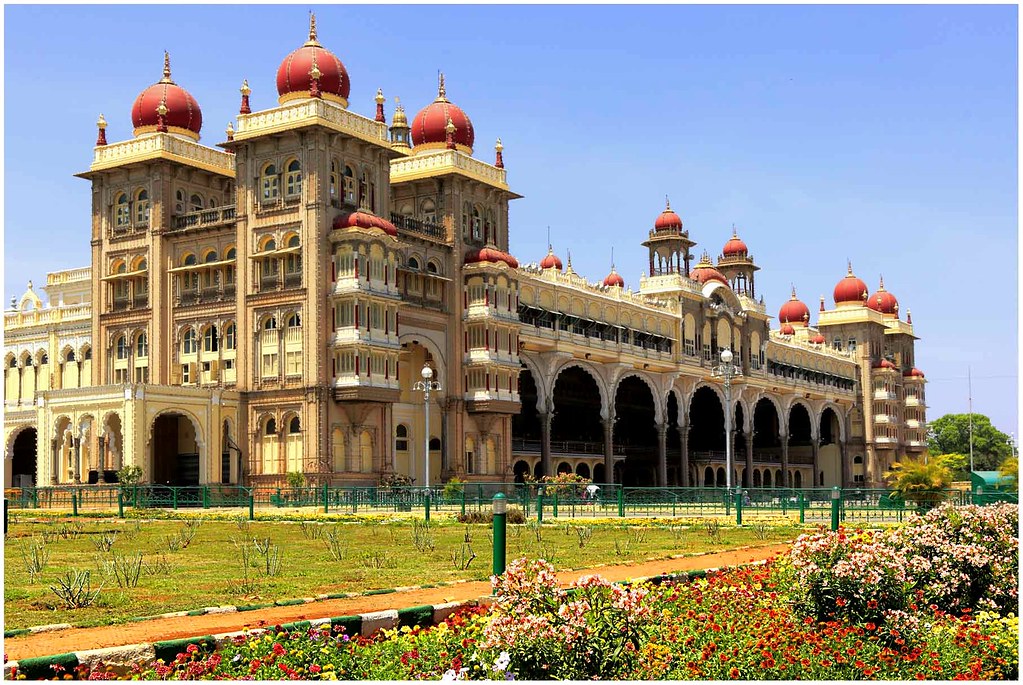Mysuru Palace: In the heart of Karnataka, the city of Mysuru stands adorned with the resplendent jewel in its crown — the Mysuru Palace. A testament to opulence, history, and cultural grandeur, this magnificent palace beckons visitors into a world where time seems to stand still.
“Step into the regal world of Mysuru Palace, a masterpiece of Indo-Saracenic architecture in the heart of Mysore, India. Adorned with intricate carvings, vibrant frescoes, and a rich historical legacy, this royal abode is a testament to the opulence of a bygone era. Explore the ornate Durbar Hall, wander through the resplendent courtyards, and witness the grandeur of the palace illuminated at night. Immerse yourself in the cultural heritage of Mysuru as you discover the tales of kings and queens within these majestic walls. Plan your visit to Mysuru Palace for a royal journey into the enchanting past.”
Architectural Grandeur: Mysuru Palace
The Mysuru Palace, also known as the Amba Vilas Palace, is a stunning example of Indo-Saracenic architecture. Its construction was commissioned in 1897 and completed in 1912, blending Hindu, Muslim, Rajput, and Gothic architectural styles seamlessly. The palace, designed by British architect Henry Irwin, stands as an embodiment of the rich cultural tapestry of Karnataka.
A Glimpse into History: Mysuru Palace
Stepping into the palace is like stepping into a bygone era. The history of Mysuru and its rulers unfolds within the ornate walls of the palace. Once the seat of the Wodeyar Maharajas, the palace exudes regality and bears witness to the changing tides of time. The architecture, the artifacts, and the stories narrated by the walls immerse visitors in the royal legacy of Mysuru.
Dazzling Illumination: Mysuru Palace
As the sun sets, Mysuru Palace undergoes a magical transformation. Every Sunday and during special occasions, the palace is illuminated with thousands of light bulbs, creating a breathtaking spectacle. The sight of the illuminated palace against the night sky is nothing short of enchanting, drawing locals and tourists alike to witness this dazzling display.
Intricate Artistry:
One cannot help but marvel at the intricate craftsmanship that adorns every nook and cranny of the palace. From the vibrant stained glass windows depicting scenes from Hindu mythology to the finely carved wooden doors, each element tells a story of skilled artisans who dedicated their craft to create this masterpiece. The Durbar Hall, with its massive chandeliers and ornate ceiling, stands as a testament to the grandeur that once filled these halls during royal ceremonies.
Royal Residences and Courtyards:
Exploring the palace grounds allows visitors to discover the private quarters of the royal family, including the Ambavilasa, where the golden throne is displayed during the Dasara festival. The palace courtyards, adorned with fountains and manicured gardens, provide a serene backdrop to the grandeur within.
Cultural Hub:
Beyond its architectural marvels, Mysuru Palace serves as a cultural hub. It hosts various events, including the world-famous Mysuru Dasara, a traditional festival that attracts people from around the globe. The palace also houses a museum showcasing a collection of royal artifacts, costumes, and photographs, offering a deeper insight into the heritage of Mysuru.
Preserving Heritage:
Preserving the cultural and historical heritage of Mysuru Palace is of paramount importance. Visitors are encouraged to appreciate the beauty of the palace responsibly, respecting its sanctity and historical significance. By doing so, we contribute to the conservation efforts that ensure this architectural gem remains a treasure for generations to come.

In conclusion, Mysuru Palace stands not just as a symbol of architectural brilliance but as a living testament to the rich history and cultural legacy of Karnataka. A visit to this majestic palace is a journey through time, allowing us to connect with the regal past of Mysuru while marveling at the enduring beauty of this royal abode.

